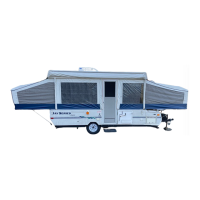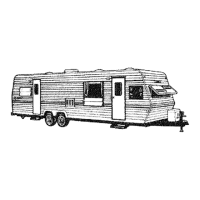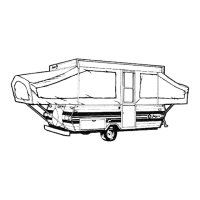39
Vehicle Operation
Your motorhome will travel safely and comfortably at highway speed limits. However, it
will take longer than a passenger automobile to reach that speed. Allow more time to go
around the vehicle you are passing. Avoid situations that might require sudden momentum
changes as the length of the motorhome aects your ability to quickly cut back into trac.
Swerves and sharp turns, especially at high speeds, could result in loss of control of the
motorhome.
The motorhome has a longer turning radius. When turning, check the road clearance and be
aware of others, especially if towing a vehicle behind your motorhome.
Adverse weather conditions and extremes in terrain may aect the performance and han-
dling of your vehicle. Do not operate the cruise control on icy or extremely wet roads,
gravel roads, winding roads, in heavy trac, or in any other trac situation where a constant
speed cannot be maintained. Use care when accelerating or decelerating on a slippery sur-
face. Abrupt speed changes can cause skidding and loss of control.
Even though your motorhome is equipped with brakes designed for its Gross Vehicle Weight
Rating (GVWR) we suggest you practice stopping away from trac until you become ac-
customed to your motorhome’s stopping distance. Your motorhome is equipped with a third
brake light that activates when the brakes are engaged.
When descending a long hill, shift the transmission into a lower gear and engage the aux-
iliary engine braking. If your motorhome is equipped with an auxiliary engine brake, en-
gagement is activated by a switch on the driver’s console. See the chassis owner’s manual
for additional information. The transmission and engine will help in controlling downhill
speed and can lengthen brake life. The distance required to stop the motorhome is greater
than an automobiles.
Driving through water deep enough to wet the brakes may aect stopping distance or cause
the vehicle to pull to one side. Check the motorhome’s brake operation in a safe area to be
sure they have not been aected.
The parking brake should be engaged when the motorhome is parked. Never drive your
motorhome with the parking brake engaged as this will reduce braking eectiveness and
cause excessive driveline wear. Refer to your Chassis guide for more information on the
parking brake.
:
Your motorhome chassis braking system is rated for operation at GVWR not
GCWR.

